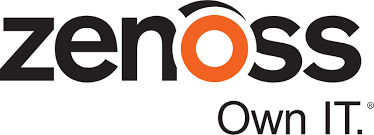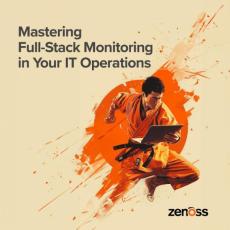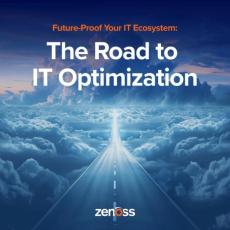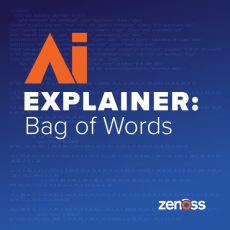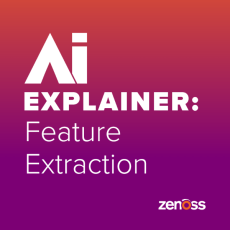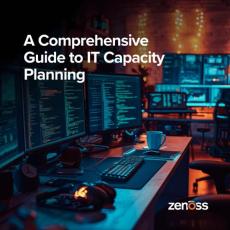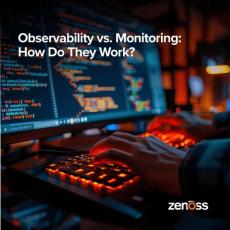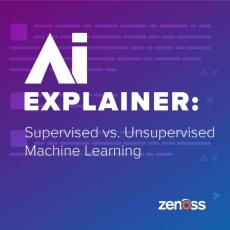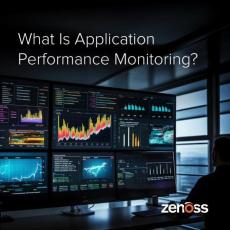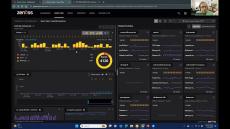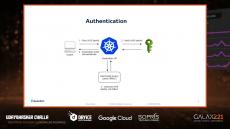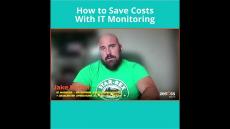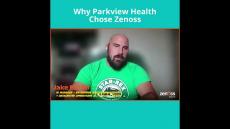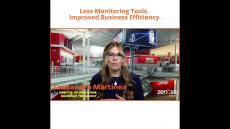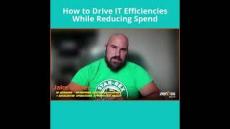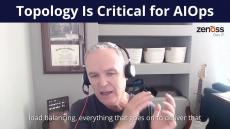|
By Dan Mullen
How do you know what you don’t know? Philosophers have pondered this age-old question for as long as they’ve been pondering. Perhaps this is because few things are scarier than the unknown. Whether you’re a child tucked in bed and wondering what’s in the closet, or a CTO in the boardroom wondering if your platform can stand up to the next generation of machine learning algorithms — we never outgrow the fear of the unknown.
|
By admin
The absence of comprehensive monitoring tools in today’s complex IT environments introduces significant challenges and risks. Without the ability to oversee the entire stack, organizations may run into an undetected performance issue, leading to potential downtime. According to numerous studies, that can cost between $5,600 and $9,000 per minute. Fortunately, full-stack monitoring emerges as a worthy solution.
|
By admin
Learn more about how IT optimization reduces operating costs, improves efficiency and increases application performance for your business. By working out an optimization initiative, businesses can refine the functionality of their enterprise architectures, ensuring that they’re using resources to their utmost potential. This not only streamlines your automating processes but also bolsters overall performance and business efficiency, allowing you to stay competitive.
|
By Trent Fitz
In my last blog post on feature extraction, I mentioned something called the bag-of-words (BoW) technique. I decided to write a little bit more on that, mostly just because I think it’s a funny label for something so technical.
|
By Trent Fitz
In a previous blog post, which was a glossary of terms related to artificial intelligence, I included this brief definition of "feature extraction": Let’s go a bit deeper on that. In the ever-expanding landscape of machine learning, feature extraction stands out as a crucial technique for enhancing the performance of models and uncovering valuable insights from complex datasets.
|
By admin
Effective capacity planning and management are fundamental to maintaining a robust IT infrastructure, helping teams optimize available resources to meet performance needs. In this guide, we’ll walk you through everything you need to know about these invaluable processes to ensure your organization’s IT infrastructure is prepared for current and future demands.
|
By admin
As organizations increasingly depend on distributed system architectures to provide modern applications and microservices, their legacy monitoring tools struggle to keep pace. These outdated systems are often based on predictable failures, but when an unforeseen performance issue occurs, it can lead to outages and unplanned downtime that impacts your customers and your business.
|
By Trent Fitz
Machine learning is a powerful tool that enables computers to learn from data and make predictions or decisions without being explicitly programmed. Two fundamental approaches to machine learning are supervised and unsupervised learning. In this blog post, we'll explore the key differences between these two approaches, along with examples of their applications.
|
By Trent Fitz
I wrote a previous blog post, "AI Explainer: What's Our Vector, Victor?," to scratch the surface on vector databases, which play a crucial role in supporting applications in machine learning, information retrieval and similarity search across diverse domains. From that blog arose the topic of embeddings, which I addressed in a subsequent post, "AI Explainer: Demystifying Embeddings." In explaining embeddings, the notion of continuous space was presented, which is the topic of this blog.
|
By admin
Applications serve as the backbone of countless operations, driving productivity, customer experience and business success. Tracking and managing their performance is therefore critical to maintain continuity and efficiency, enabling IT teams to proactively identify and resolve issues before they lead to downtime and potential revenue loss. That’s where application performance monitoring (APM) comes in.
|
By Zenoss
In this video blog post, I delve into the world of Zenoss Smart View, an indispensable tool that has revolutionized the way IT operations personnel approach diagnostic challenges.
|
By Zenoss
Udaybhasker Challa, Monitoring Engineer at Guardian Life Insurance reviews how Guardian's Kubernetes/EKS environments are being monitored by Zenoss. This will include discussion on pods, containers and autoscaling node alerts, and will show the relationship of cluster components through Zenoss Service Impact.
|
By Zenoss
According to Gartner, the average cost of IT downtime is $5,600 per MINUTE. That's $93.33 per SECOND. Why is downtime such a big deal? Consolidating your monitoring tools give you full visibility of overall IT service health in a single view, reducing mean time to resolve (MTTR) issues. Lower MTTR = cost savings!
|
By Zenoss
After an extensive review process, Zenoss came out as the winner for Parkview Health's IT monitoring needs. The flexibility and out-of-the-box capabilities of the Zenoss Cloud monitoring solution were some of the reasons Parkview Health selected Zenoss.
|
By Zenoss
The Parkview Health team understands that the key to providing value to the business is through intelligent automation. Intelligent monitoring and AIOps capabilities can be combined to derive the much-needed context, an ingredient that has proven to be paramount in enabling intelligent automation to immediately address a broad range of IT issues. Innovative organizations, like Parkview Health, are focusing their monitoring and analytics approach to develop this elusive context are rapidly becoming able to.
|
By Zenoss
Like most growing enterprises, Rackspace accumulated over 20 point IT monitoring tools through company acquisitions and one-off use cases. This can lead to operational inefficiencies and excess licensing costs. As part of Rackspace's best practices, they assessed the use of these tools' capabilities and decided to get rid of the tool bloat. For over 15 years Zenoss has remained a central part of Rackspace's IT monitoring strategy due to our scaling capabilities and 400+ integrations.
|
By Zenoss
Less is more. Maximize your monitoring ROI through monitoring tool consolidation. Maintaining process efficiencies as your company grows is a pervasive challenge. As growth occurs, so too does the number of point monitoring solutions in the IT tool stack, exacerbating the issue.
|
By Zenoss
Give your team a break from the blame game. When IT issues occur, you don't want to spend precious time trying to figure out whose domain is the problem instead of actually RESOLVING the issue. A single, holistic view leads to much faster root-cause identification and reduced downtime from issues in your dynamic environment. The Parkview Health team is able to take these insights and automate a rapid resolution when issues occur.
|
By Zenoss
Longtime customer Rackspace knows a thing or two about operating at scale. As a multicloud solution provider, Rackspace leverages Zenoss to help their customers maximize the benefits of modern cloud by delivering proven multicloud solutions across applications, data and security. With Zenoss, they’re able to monitor the health of over 70,000 managed resources across the globe.
|
By Zenoss
In this video, we explain what topology is and why it’s critical for the success of AIOps projects. Simply adding machine learning to event correlation has proven an ineffective approach for root-causing IT issues in environments of any size or complexity. If you’re considering different approaches to AIOps, there are two questions you need to ask about topology. This brief video will arm you with those questions and will help make your AIOps project(s) successful.
|
By Zenoss
AIOps, i.e., artificial intelligence for IT operations, has become the latest strategy du jour in the IT operations management space to help address and better manage the growing complexity and extreme scale of modern IT environments. AIOps enables some unique and new capabilities on this front, though it is quite a bit more complicated than the panacea that it is made out to be. However, the underlying AI and machine learning (ML) concepts do help complement, supplement and, in particular cases, even supplant more traditional approaches to handling typical IT Ops scenarios at scale.
|
By Zenoss
During our recent webinar, Using the Right Data In Context to Prevent IT Outages, Forrester Principal Analyst Charles Betz shared his insights on the importance of leveraging the different types of machine data collected through intelligent monitoring and analytics solutions.
|
By Zenoss
The ability to analyze data across customers in order to inform their offerings is emerging as a potentially significant differentiator between monitoring vendors that have SaaS deployment offerings and those that don't. While some vendors pursue this opportunity, others are waiting on the sidelines, uncertain about privacy implications.
|
By Zenoss
The IT industry has invested billions over the span of several decades in improving infrastructure resiliency. Has it worked? A new study by the Uptime Institute, an independent division of 451 Research, indicates that significant IT downtime incidents have been trending in the wrong direction, with a 24% increase since the previous study in 2017.
|
By Zenoss
In order to modernize for the digital economy, IT organizations need to build strategies that prioritize the user experience - deploying enhanced monitoring capabilities that include advanced analytics, automation, real-time insights and scalability.
|
By Zenoss
Operating in a world of "here and now," demands on IT Ops teams have never been greater. New IT paradigms have created a rising tide of complexity and obfuscation for IT Ops teams that still own the bottom-line responsibility of keeping today's new services up and running.
- January 2025 (1)
- May 2024 (1)
- April 2024 (1)
- March 2024 (6)
- February 2024 (5)
- January 2024 (1)
- December 2023 (3)
- November 2023 (6)
- October 2023 (2)
- September 2023 (2)
- August 2023 (2)
- July 2023 (1)
- June 2023 (1)
- May 2023 (1)
- March 2023 (1)
- January 2023 (2)
- August 2022 (8)
- July 2022 (5)
- June 2022 (3)
- May 2022 (1)
- March 2022 (1)
- August 2021 (1)
- July 2021 (1)
- June 2021 (1)
- May 2021 (3)
- February 2021 (1)
- November 2020 (2)
- October 2020 (1)
- September 2020 (1)
- July 2020 (2)
- May 2020 (1)
- April 2020 (2)
- March 2020 (1)
- January 2020 (6)
- December 2019 (4)
- November 2019 (5)
- October 2019 (6)
- September 2019 (4)
- August 2019 (2)
- July 2019 (4)
- June 2019 (6)
- May 2019 (9)
- April 2019 (7)
- March 2019 (1)
- February 2019 (6)
- January 2019 (3)
- December 2018 (3)
- November 2018 (3)
- October 2018 (14)
- September 2018 (8)
- July 2018 (2)
Zenoss works with the world's largest organizations to ensure their IT services and applications are always on.
As the leader in software-defined IT operations, Zenoss uniquely collects all types of machine data, building real-time IT service models that train machine learning algorithms to predict and eliminate outages in hybrid IT environments, dramatically reducing downtime and IT spend. We do this with a SaaS-based solution that provides deep infrastructure monitoring for your hybrid IT environment, at any scale. Using Zenoss, you can:
- Eliminate Blind Spots: Gain total coverage and holistic, real-time visibility into the health of on-premises, cloud and serverless environments by relying on a single source of truth.
- Predict Impacts: Isolate problems and service risks, understand key trends and anomalies, and forecast capacity issues before business is impacted.
- Resolve Issues Faster: Accelerate resolution by streamlining investigation and collaboration across teams, quickly identifying root cause, and automating remediation.
- Operate at Scale: Confidently scale and adapt to unique and evolving needs while focusing on delivering business value through IT services rather than administering the tools that support them.
Modern IT Monitoring for Your Hybrid IT Environment.

